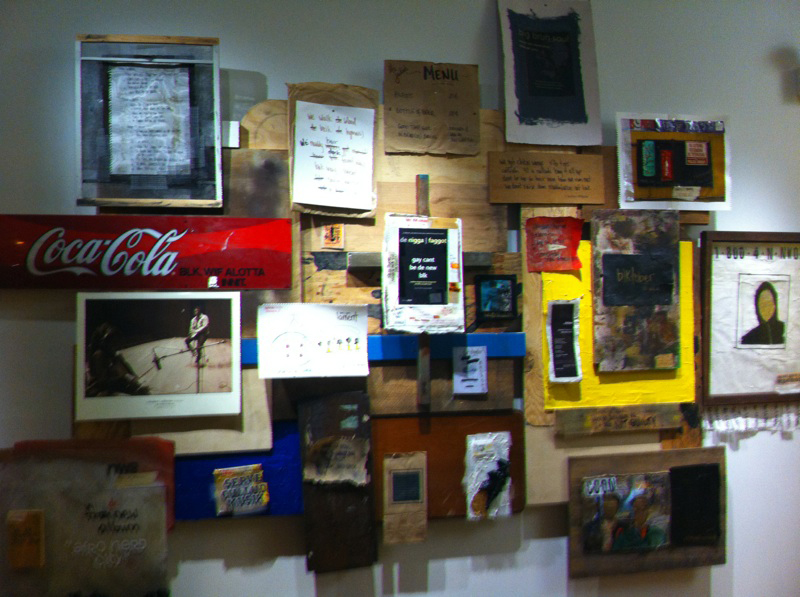
“I’m a black boy with a bag of candy. You roamin’ with a gun.” These are the words that anyone sitting on the Garfield Green Line station platform on Saturday night heard emanating from the Arts Incubator across the street. These words are also the lyrics from a song called “groun(d),” a tribute to Trayvon Martin composed by Avery R. Young, who led upwards of a hundred people in a performance that included singing, swaying, wailing, laughing, stomping, and clapping. There on the border of Hyde Park—one of the whitest and safest neighborhoods on the South Side—and Washington Park—one of the blackest and most violent— it was hard not to be reminded of the conditions of Trayvon Martin’s death.
Avery R. Young, an exuberant and well-dressed artist who, at thirty-nine years old, can’t sit still, is one of the current artists-in-residence for the UofC’s Arts and Public Life initiative. His latest project, “groun(d),” which came to fruition on Saturday night, is both a memorial to Trayvon Martin and a protest of the questionable circumstances surrounding his death. “I heard about the story [Martin’s] and I knew I had to respond,” Young writes in an interview, published by the Arts Incubator.
The three-hour performance was inspired by the jazz and gospel of twenties and thirties “race records.” In song after song, Young and two of his collaborators urged audience members to join along in the repetitive refrains. One of the pieces that referenced black hangings had audience members rocking back and forth in their seats, repeating the line “Were you there?” Another, the phrase: “Stand right here. Stand my ground. Go nowhere.”
“This is music to represent us as a people, no matter what happens to us,” Young said, wiping his forehead off with a paper towel after a performance that had him stomping his boots and jumping up and down. Some of the pieces seemed unrelated to Martin’s death and more a promotion of Young’s latest album, but nobody seemed to mind.
The opening also drew the audience to the unveiling of Young’s installation pieces, dedicated to Trayvon Martin on the Incubator’s lower floor. Biographical details from Martin’s life and death—including the ubiquitous hoodie, a bag of Skittles, and Arizona iced tea—were prevalent throughout the show, reminding us not only of the seventeen-year-old boy from Florida, but also the mantra “We are all Trayvon Martin,” or as Obama said, “Trayvon Martin could have been me.” One installation in a small nook of the gallery included a noose above oversized bags of spilt Skittles. Another featured a giant hanging microphone sculpture plastered with Arizona wrappers. Perhaps the most noteworthy piece in the gallery was a video installation showing the profiles of a number of young black men in dark brown hoodies morphing into one another. The video not only confronts viewers with the racist claim that all black men look the same, but also calls for interrogation of the racist narrative that associates black men with violence. “A hoodie,” Young writes in the interview, “never has been associated with violence or fear. Black or brown skin inside the hood is associated with fear…If I look at American history, I should feel suspicious of any white man in a hood.”
As an exhibit, “groun(d)” succeeds because it doesn’t just point to the tragedy of one boy and his family. For Young, every parent, child, and gun-owner in America is necessarily involved and responsible for creating change. Beyond the hoodie, Young’s work considers the vernacular language, gang violence, and music culture associated with black men, relating this cultural narrative back to Martin’s story. One part of a collage reads “Serve Cullud Musik,” and another “Were u derr when de jury came bak + said not guilty.” Through his words and melodies and images, Young breaks these stereotypes down for viewers both white and black, seemingly calling for a new black solidarity. “I think the work is layered enough so that anybody can take something from it,” Young says. “What they take, I don’t know…This here breathing be a struggle sometimes, but as long as you are here doing it, find a foundation and stand on it.”


